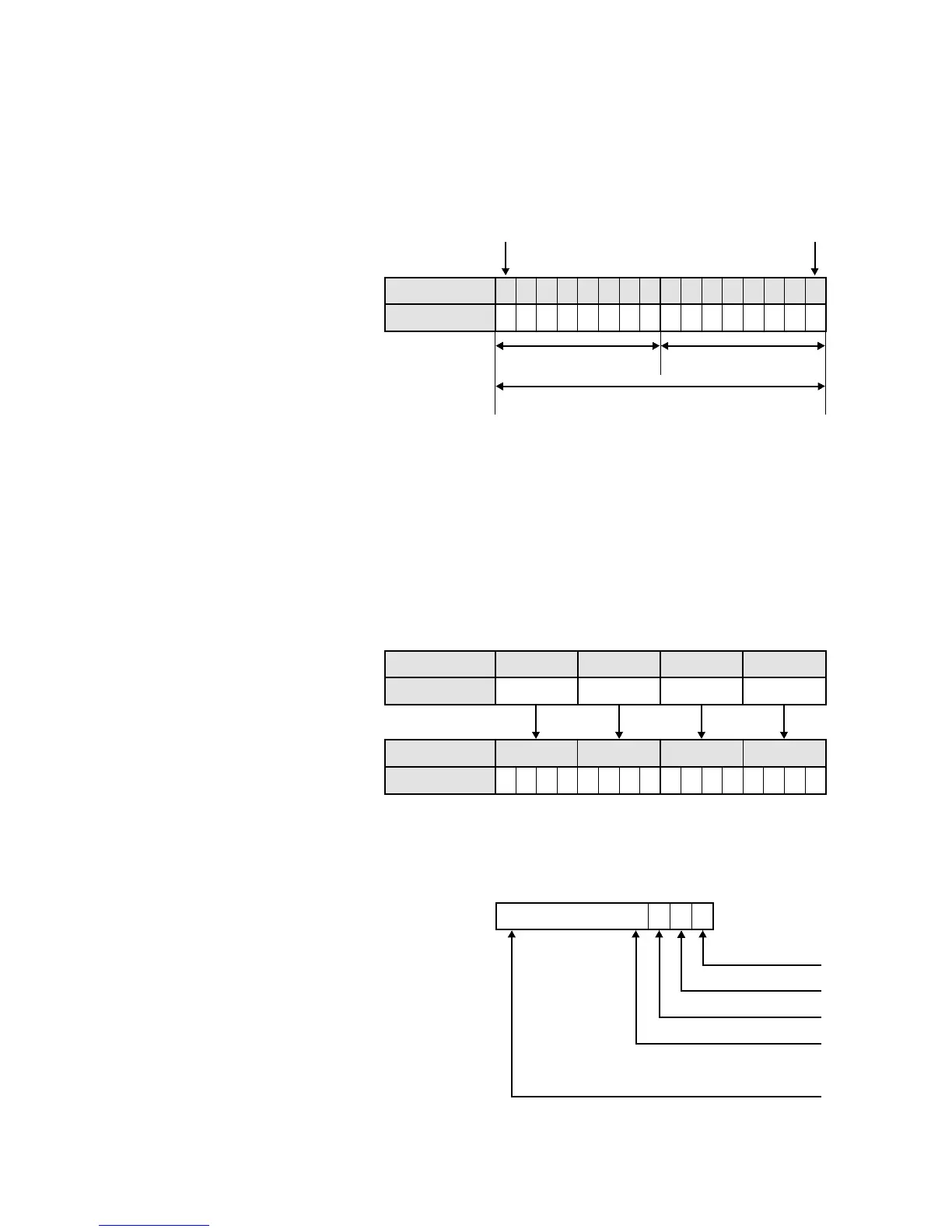255
8-9. Terminology
In general, programmable controllers work with binary numbers in one form
or another to represent various codes or quantities. The binary number
system uses the number 2 as the base and the only allowable symbols are “0”
and “1”. There are no 2s, 3s, etc. Each digit of a binary code is called as
“bit”. “Bit” means “binary digit”. A group of 8 bits is called a “byte” and a
group of 16 bits (two bytes) is called a “word”.
The binary number “0000000000101011” is expressed in decimal as follows:
1 × 2
0
+ 1 × 2
1
+ 0 × 2
2
+ 1 × 2
3
+ 0 × 2
4
+ 1 × 2
5
+
.....
+ 0 × 2
15
= 1 + 2 + 0 + 8 + 0 + 32 +
.....
+ 0
= 43
One of the codes expressed in binary. BCD is a binary code in which each
decimal digit from 0 to 9 is represented by four binary digits (bits). The four
positions have a weighted value of 1, 2, 4, and 8, respectively, starting with
the least significant bit. A thumbwheel switch is specified as a BCD device,
and when connected to a programmable controller, each decimal digit
requires four inputs.
[EXAMPLE]
A number system that uses two symbols, “0” and “1”. Each digit position has
a weighted value of 1, 2, 4, 8, 16, 32, 64, and so on begining with the least
significant (right-most) digit.
The sum of N0 through Nn is the decimal equivalent of the number in base
“2”.
